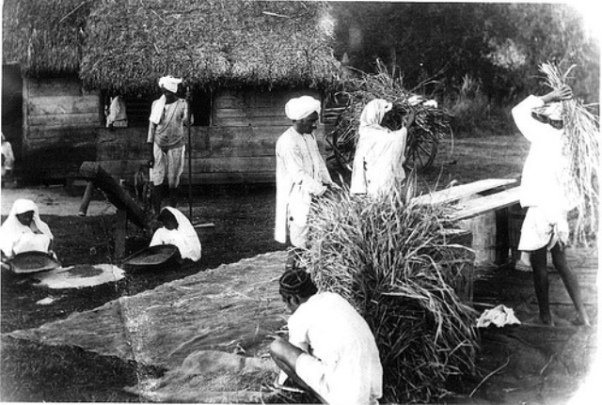An overview of conditions in British Guiana leading up to the First World War
The Great War or First World War began seventy-five years after enslaved people were declared totally “free” in the British colonies. But what were social conditions like for the people of British Guiana? Sugar estate owners were the main employers and the sugar industry was a thriving business, however, within 50 years of emancipation, the price of sugar had fallen by 70 percent and by the 1890s, the worldwide sugar industry was in decline.
In 1905, female cane-cutters earned 7-8 cents per day. Men doing the same job, earned between 11 to 18 cents per day for a 14 hour day, working six days a week. For other jobs, the wages were slightly better, ranging from between 13 to 24 cents per day and Pork Knockers (gold miners) earned considerably more at 64 cents per day. (Nehusi, K.S. Themes in African-Guyanese History, 1998 p. 258).
Beginning in the mid 1870s, East Indian indentured labourers (after completing their contracts) were able to purchase land and set up their own villages. Many were given free land or paid a fraction of the cost Africans had to pay after emancipation.
The Portuguese and Chinese, who had also arrived as contracted labour, were given bank loans to establish their own retail businesses at the expense of Africans who had their loans withdrawn. Primary school education had been compulsory since 1876 and Africans, who viewed education as a means out of poverty, readily embraced the education system as did Portuguese migrants.
In contrast, East Indians rarely sent their children to school and in 1901, 80 per cent of East Indian children were uneducated. As a result of embracing the education system, many Guyanese Creoles later became doctors, lawyers, preachers and teachers, making them the new middle-class. However, the hierarchical system was firmly entrenched in concepts of race (with Europeans on top), wealth and shadeism.




